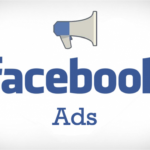While we’ve already written about keywords and their importance when it comes to SEO, your website also needs to be accessible enough for people and Google’s robots to read. Meaning you need to write something interesting and instantly attractive for humans. But also written in a way that is easy for Google to think, “This page is about a Chinese restaurant in New York.”
You can use a few techniques to make your website easier to read for both humans and robots.
Firstly, I’d suggest that you write every SEO aimed article with your audience in mind. This can be an afterthought at times as we rush to get content out, but think about what the searcher wants from the article. What problem do they have or what question do they need answering. You can then split your page or article down into the following sections:
1. Title
Start with your title, this is based on your keywords and research. The title must include the keywords. The first few pieces you write for your website should be self-explanatory as they will describe your business, what it does and where:
“Best Chinese Restaurant In New York”
2. Subheadings
Think about what question(s) the searcher is looking to answer. Here they want to find the best Chinese restaurant in New York. So let them have what they want.
If you owned the restaurant, you might want to split your page into reasons as to why you’re the best Chinese restaurant. For another site, you might have the option of writing a list of the best Chinese restaurants in New York.
Think again of who will read the article. Based on the title you can assume they may come to your page looking to find out what the best Chinese restaurant is in New York. Your article must then give them the answer.
Splitting your page with subheadings makes it easier to read for humans and robots and also makes it more manageable to write.
Each subheading should also include relevant keywords but also pull the reader into your writing. From here, your article should have an outline.
3. Write your introduction.
This should pull the reader in immediately by explaining their problem back to them. If they’ve come across a page about the best Chinese restaurant in New York. What is their possible problem? Probably they want to find a good restaurant to eat at.
Imagine yourself in their shoes, they want information about Chinese restaurants, so write about why they’re there.
Then you can move into how you’re going to help them. It’s quite formulaic, but it works. “You’re looking for the best Chinese restaurant in New York, and we’ve got 5 reasons why ours is the best.”
4. Write the rest of the article.
The more concise and easy to read, the better. The articles should be sprinkled with keywords. Don’t just mention “Chinese restaurant in New York” in the title, but try to use it in the text too.
You should also try to keep the attention of your reader. For example, you could include bucket brigades to keep the reader’s interest.
Bucket brigades are a copywriting technique used to keep users on a website. Think of those cheesy ads you see on TV that tease you to continue.
“But wait, there’s more:”
Bucket brigades are the writing equivalent.
Let me explain:
^ Like that. It keeps the reader engaged, and they find it hard to stop reading because the text has no definitive end.
So the best way to write is to build cliffhangers that keep people reading. Until they reach the end.
By that point, they should be satisfied enough that their query has been answered and Google will see that they don’t keep searching. Which equals better organic results for that page!











